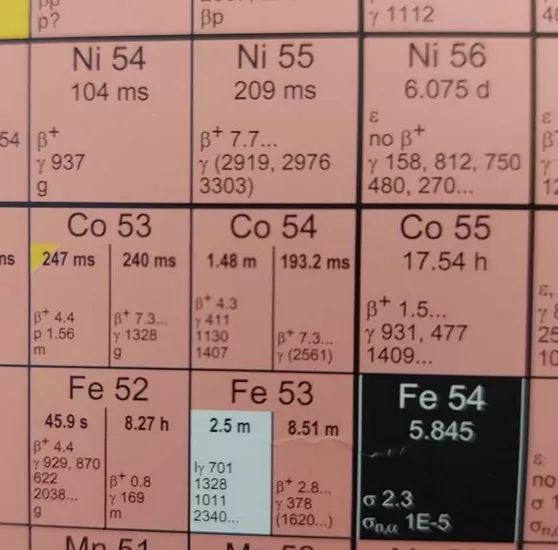Proton Dripline Studies
Lund activities along the proton dripline in medium mass nuclei
Atomic nuclei with the same number of protons and neutrons (N=Z) or those with proton and neutron numbers exchanged ("mirror nuclei") are laboratories to study certain symmetries of the nuclear force. Further, between doubly-magic 56Ni and 100Sn, the N=Z line is close to the proton dripline. This adds aspects of proton-unbound states and astrophysical relevance, e.g., the course of the rapid proton capture process.
Experimental investigations of medium-mass N~Z has a long tradition in our group. For a long time, it has had a focus on in-beam γ-ray spectroscopy using germanium-detector arrays at accelerator facilities in Europe and the United States. Following the discovery of prompt discrete-energy proton emission (nuclear force) in direct competition with γ-ray emission (electromagnetic force), experimental set-ups have been improved to be sensitive to high-resolution in-beam coincidence spectroscopy of γ rays and light charged particles. Timescales of such coincidences are on the order of picoseconds (10-12 s). For details, see the link to the 2020 campaign conducted at Argonne National Laboratory in 2020, likewise a number of student theses.
Proton radioactivity involving larger timescales has been very selectively studied by means of ion trap-assisted decay spectroscopy, or by "taking pictures" of particle decays with time-projection chambers.
Whether or not - or to which extent - the proton and neutron are the same particle ("isospin symmetry") on the level of the nuclear force can be studied by looking at sequences of excited states and their electromagnetic decays in so-called "mirror nuclei". These are nuclei for which the proton and neutron numbers are exchanged, for example, 54Fe (Z=26, N=28) and 54Ni (Z=28, N=26) as illustrated on the right hand side. By (practical) definition, mirror nuclei are close to the N=Z line, i.e., they are usually created and observed in the same in-beam γ-ray spectroscopy experiments.
- Proton Dripline Studies
- In-beam Spectroscopy at ANL
- Trap-assisted Spectroscopy
- Isospin Symmetry (Breaking)
- Main Publications
- Student Theses
Nuclear Structure
Back to the main page for Nuclear Structure


